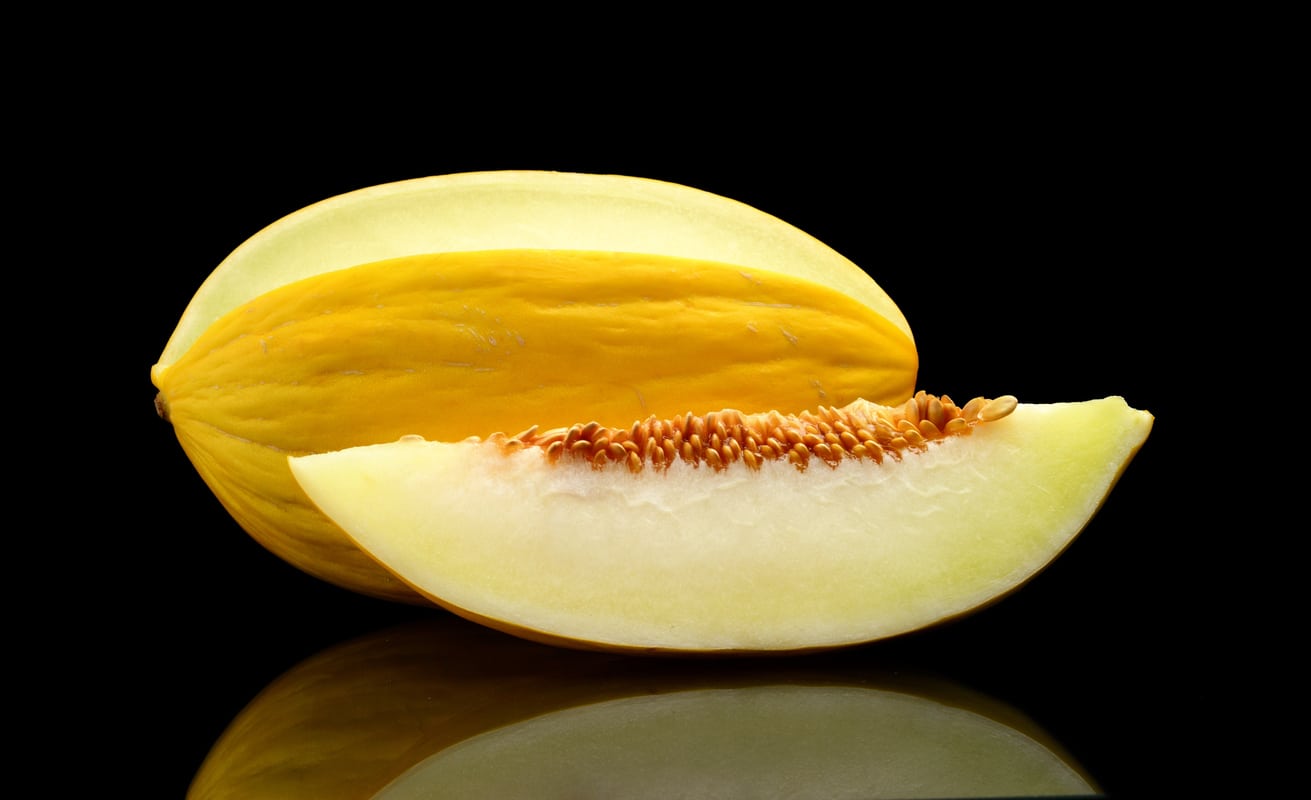Canary Melon Information: Growing Canary Melons In The Garden

Canary melons are beautiful bright yellow hybrid melons that are commonly grown in parts of Asia including Japan and South Korea. Interested in growing your own canary melons? The following canary melon information can help with canary melon growing, harvesting, and care as well as what to do with canary melons once they’re picked.
Canary Melon Information
Canary melons (Cucumis melo) are also referred to as San Juan canary melons, Spanish melons and Juane des Canaries. Named for its brilliant yellow color that is reminiscent of canary birds, canary melons are oval with vibrant yellow skin and a cream-colored flesh. Melons may weigh 4-5 pounds (2 or so kg.) when ripe and are around 5 inches (13 cm.) across. Like watermelons and pumpkins, canary melons flower prior to fruiting. The male blossoms flower first then wilt and drop off to reveal the female blooms. Once pollinated, the fruit begins to grow beneath the female blossom.
Growing Canary Melons
Vines of the canary melon can grow to about 10 feet (3 m.) in length and individual plants to 2 feet (61 cm.) in height. They require plenty of heat to reach maturity and a growing season of 80-90 days. Start seeds indoors in peat pots or sow directly outside after all danger of frost has passed and the soil is warm. To sow in peat pots, start seeds 6-8 weeks before the last frost in your area. Sow the seeds ½ inch (1 cm.) under the soil. Harden off for a week and then transplant into the garden when the seedlings have their first two sets of true leaves. Transplant two seedlings per hill and water in well. If sowing directly into the garden, canary melons like a slightly acidic soil from 6.0 to 6.8. Amend the soil if needed to bring the pH to that level. Dig in plenty of organic material to provide the plants with nutrients and good drainage. Sow the seeds into the garden when all danger of frost has passed for your area. Sow 3-5 seeds in hills that are 3 feet (just under a meter) apart in rows 6 feet (nearly 2 m.) apart. Water thoroughly. Thin the seedlings when the first two sets of true leaves appear. Leave two plants per hill.
Canary Melon Care
Like all melons, canary melons like lots of sun, warm temperatures and moist soil. Water each week with 1-2 inches (2.5 to 5 cm.) of water depending upon weather conditions. Water in the morning so the leaves have a chance to dry and don’t foster fungal diseases. Increase irrigation to 2 inches (5 cm.) per week when the vines set fruit. Cut the irrigation to 1 inch (2.5 cm.) per week when the melons begin to mature, usually three weeks prior to canary melon harvesting. Fertilize the vines every 2-3 weeks with an all-purpose food, following the manufacturer’s instructions.
What to Do with Canary Melons
Canary melons are known to be incredibly sweet with a taste that is similar to honeydew melon. Like honeydew, canary melons are eaten fresh as slices or added to fruit platters and salads, made into smoothies, or even made into delicious cocktails.
Sign up for the Gardening Know How newsletter today and receive a free copy of our e-book "How to Grow Delicious Tomatoes".

Amy Grant has been gardening for 30 years and writing for 15. A professional chef and caterer, Amy's area of expertise is culinary gardening.
